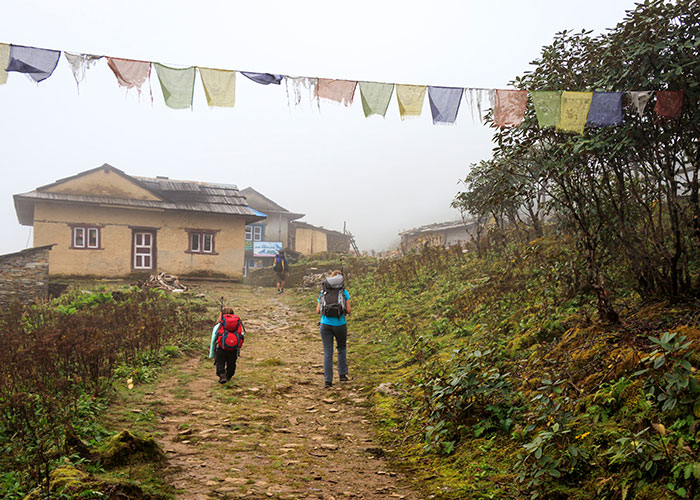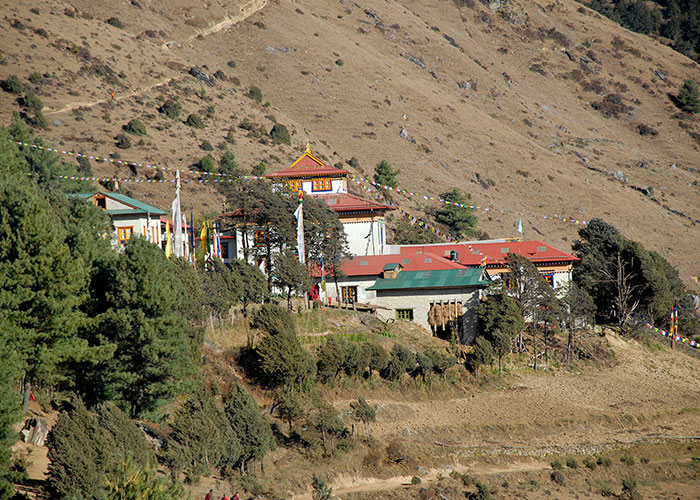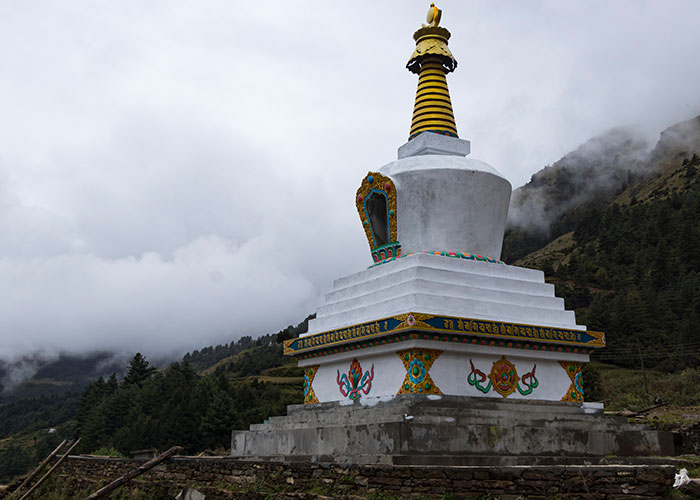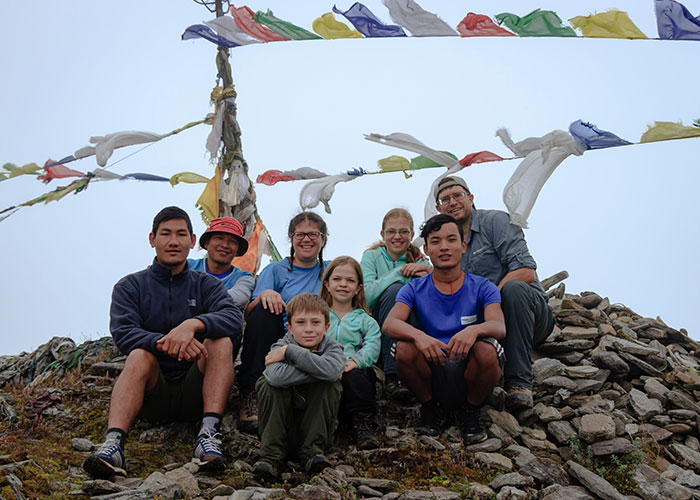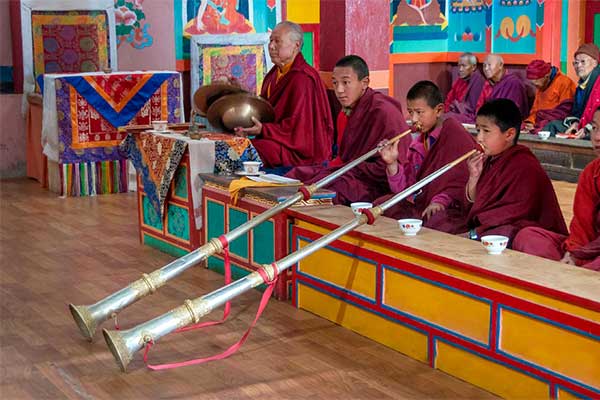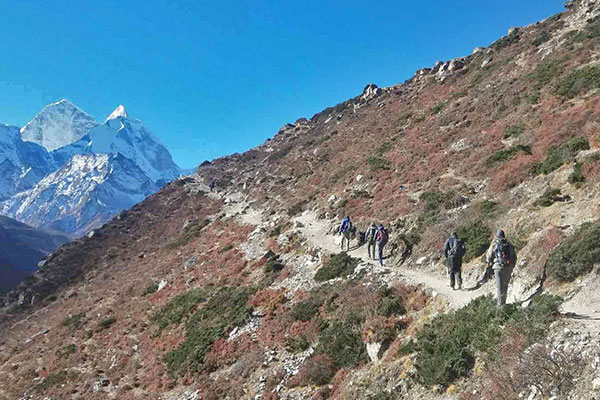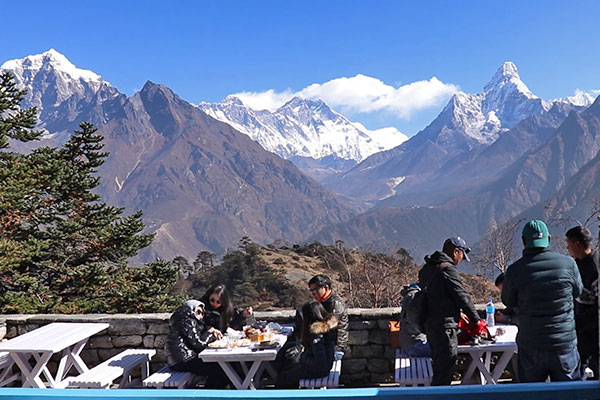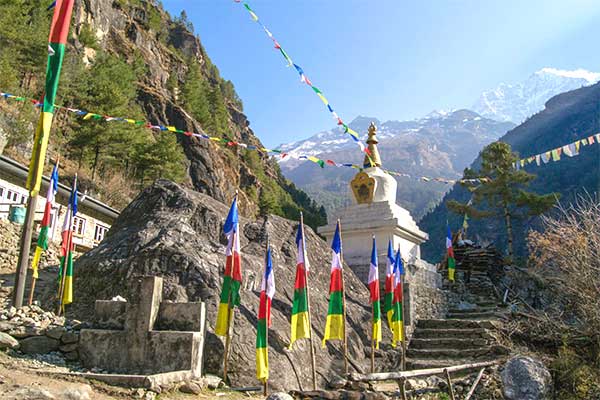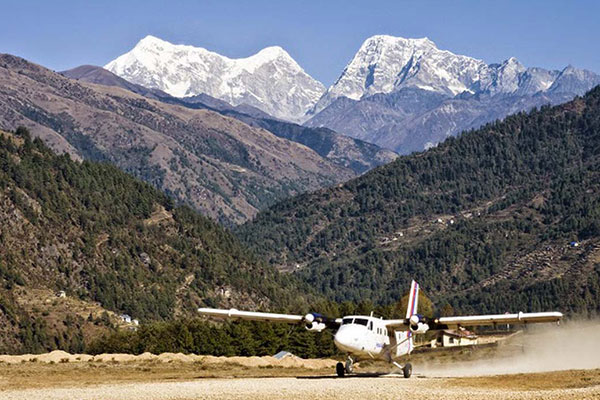Overview
Duration :
13 Days
Secondary Activity:
Buddhist Culture and Monastery View
Max altitude :
3,870m/12,696 ft
Transportation:
Private Vehicle and Domestic flight
Trip ends in:
Kathmandu
Accomodation:
Lodge
Primary activity:
Trekking and Hiking
Group Size:
Min. 2 pax
Country:
Nepal
Trip starts from:
Kathmandu
Diffficulty:
Moderate
Meals:
Nepali and Continental
Best Season:
Autumn and Spring
Trip route:
Kathmandu-Phaphlu-Jyalsa-Chiwong Gompa-Taksindo La-Taksindo-Singseri La Pass-Ringmo-Singseri-Mopung-Yasa Peak-Thupten Choling-Mopung-Junbesi-Lamjura-Lamjura-Loding Ma-Phambuk-Pike Pass-Loding Ma-Phaphlu-Kathmandu
Trip introduction
Lower Solukhumbu Trek is a wonderful opportunity to witness natural and topographical variation along with the cultural insights of local Sherpa inhabitants. The major highlight of this trek is in villages. Even though this area is small and rural; the villages are culturally and religiously diverse with lots of artistic ancient monasteries.
We initiate our Lower Solukhumbu trek after your arrival in Kathmandu followed the next day by sightseeing around UNESCO world heritage sites. And completing necessary trekking preparations afterward. The journey starts as we board a scenic mountain flight from Kathmandu to the airstrip at Phaplu. And begin trekking activity until we reach Jyalsa Tibetan Camp at the end of the day. Further, we visit monasteries like Chiwong Gompa via Taksindo La pass and cross Singsei La pass via Ringmo. In this way, we arrive at the highest point of the trek at Yasa Peak at an altitude of 4,140 m above sea level. Finally, the Lower Solukhumbu Trekking track goes through Junbesi, Lamjuta, Phambuk Prak, Loding Ma, and Phaplu before we fly back to Kathmandu.
Lower Solukhumbu Trek is best recommended during the months of September to December. As these are the season that provides clear views of the mountains. And also the months of March to May are a great seasonal time to view blossoming rhododendron forests. Regarding the fitness level, anyone can join this trip with a reasonable fitness level; without any risk of high altitude sickness. Join Lower Solukhumbu Trek with Nepal Mountain Trekkers. Contact us now for booking and further information.
Special Note:
If this itinerary doesn’t suit your requirement or if you want to customize it, please feel free to contact us. This trek could be customized as per your required time frame and budget limits.
Overview
-
Day 1Arrival in Kathmandu (1,300m/4,264ft):
-
Day 2Sightseeing and Trek Preparation:
-
Day 3Fly to Phaphlu (2,469m/8,100 ft ) and Trek to Jyalsa Tibetan Camp (2,690m/8,825 ft):
-
Day 4Jyalsa to Chiwong Gompa (2,880m/9,448 ft):
-
Day 5Chiwong Gompa to Taksindo(2,960m/9,711 ft) via Taksindo La (3,870m/12,696 ft):
-
Day 6Taksindo to Singseri La Pass (3,475m/11,400 ft) via Ringmo (2,700m/8,858 ft):
-
Day 7Singseri to Mopung (2,750m/9,022 ft) via Yasa Peak (4,140m/13,582 ft) and Thupten Choling (2,850m/9,350 ft):
-
Day 8Mopung to Junbesi (2,700m/8,858 ft):
-
Day 9Junbesi to Lamjura(3,550m/11,646 ft) via Lamjura La (3,600m/11,811 ft):
-
Day 10Lamjura to Loding Ma (2,600m/8,530 ft) via Phambuk Peak (3,840m/12,598 ft) and Pike Pass (3,500m/11,482 ft):
-
Day 11Loding Ma to Phaphlu:
-
Day 12Fly Phaphlu to Kathmandu:
-
Day 13Departure Day:
Detail Itinerary
Day 1 : Arrival in Kathmandu (1,300m/4,264ft)::
This trek to the lower altitude areas of the Everest region begins with your arrival at the Tribhuvan International Airport (TIA), Kathmandu. After you complete the necessary formalities in immigration at the airport, our representative shall greet you at the airport. You shall then be transferred to the respective hotel of your stay which shall be in the center of Kathmandu and shall have all the facilities necessary for your comfortable stay. Take proper rest today as the entertaining exploration of the hills of the Solukhumbu region beginning tomorrow shall keep you fully engaged. Enjoy the delicious and authentic Nepalese food in the hotel and experience warm hospitality from the hotel staff. Overnight in Kathmandu.
Day 2 : Sightseeing and Trek Preparation::
Today we have set aside the day for exploring the richness of Kathmandu valley, ancient heritages, and other architecture in the neighboring cities of Bhaktapur and Patan as practically possible. Some of the major heritages to be included in the sightseeing are the excellent Hindu architecture of Pashupatinath Temple and the Buddhist pilgrimages of Boudhanath Stupa and the 14th-century old Swayambhunath Stupa, also known as the Monkey Temple among the foreign visitors. We also have the excellent masterpieces of Nepalese architecture in the Royal palaces in Basantapur Durbar Square (Kathmandu), Bhaktapur, and the other medieval aged city of Patan. After exploring the world-famous heritage and unique lifestyle of the locals, we meet our trekking guide for the preparation of the trek in the hills of the Everest region. Get all your queries clarified and receive the information necessary during the trek. Overnight in Kathmandu.
Day 3 : Fly to Phaphlu (2,469m/8,100 ft ) and Trek to Jyalsa Tibetan Camp (2,690m/8,825 ft)::
Today we shall fly to the small mountainous town of Phaplu in the Solukhumbu district for our trek. This flight takes around 35 minutes and flies above and across the lush valleys, green hills, and the occasional views of the mountain vistas. After a short and scenic flight, we reach the Phaplu airport which is a seasonal airport and which also serves as an alternative to the Lukla airport at times. After the flight, we shall meet the local support crews and prepare for the further sections of the trek in this beautiful valley. A further section of the trek for today shall serve as a gentle and introductory trek. The trek shall lead to the Jyalsa Tibetan camp which shall provide insight into the daily lifestyle and culture of this predominantly Sherpa and Tibetan Buddhism village. Trekkers may also shop for some of the local handicrafts made by the Tibetan refugees. After exploring the surrounding we shall get proper rest. Overnight in Phaplu.
Day 4 : Jyalsa to Chiwong Gompa (2,880m/9,448 ft)::
Traversing in the periphery of Phaplu and the neighboring settlements continues as we move a bit further along the trail for the destination of Chiwong Gompa. The trail branches off from the route leading to Benighat and moves forward along the hills and through the smaller settlements along the trail and crossing several small streams originating in the higher hills, besides the greenery and forests. Moving along the trail we further branch off with the trail ahead of Chiwang village and after crossing the Chiwang River. Moving ahead on the trail we reach the ancient Chiwong Monastery where the second largest festival of the Mani Rimdu festival is held. The fewer available teahouses serve the relatively fewer trekkers and tourists visiting this area. We shall explore the heritages, artistry, and thangkas in the monastery as well as the surrounding landscape. Overnight around Chiwong Gompa.
Day 5 : Chiwong Gompa to Taksindo(2,960m/9,711 ft) via Taksindo La (3,870m/12,696 ft)::
We start our trek for today in the minor trail and continue on the similar trail till we rejoin the trail of the previous day near the settlement of Jambuk. We pass through the smaller settlements of Beni and traverse along past the viewpoint ahead of Beni and other settlements of Phera, Chandung, and Temuche before we join the main trail joining the trekking route from Jiri to Everest Base Camp at Ringmu. Before that, we pass through a couple of small rivulets, small hydropower, and prayer wheels. After Ringmu we turn right on the trail and after an uphill climb ascent to the Taksindu La pass. Ahead on the trail, we descend on a relatively steep trail in a winding fashion before we reach the settlement of Taksindo which has a Cheese factory and powerhouse that lightens the surrounding areas. Overnight in Taksindo.
Day 6 : Taksindo to Singseri La Pass (3,475m/11,400 ft) via Ringmo (2,700m/8,858 ft)::
Today we shall leave the Taksindo, the cheese factory, and the monastery founded by the monks from Thyangboche for the Singseri La pass. The uphill climb to the pass and then a downhill descent leads us to the settlement of Ringmo. Intermittently we also trek past the settlements with the cultivation of potatoes and other local products besides the orchards. We cross the Beni River by a suspension bridge and then traverse a winding trail through sparse forest and the occasional sight of pastures of Yaks used by the locals for grazing their animals in the summer. After a further trek on the trail, we reach the destination of Singseri La pass. Overnight in Singseri La Pass.
Day 7 : Singseri to Mopung (2,750m/9,022 ft) via Yasa Peak (4,140m/13,582 ft) and Thupten Choling (2,850m/9,350 ft)::
The trek has the beautiful valley of Mopung as the destination. Trekking on the ridge and along the Junbesi River towards the origin of the river we reach our destination. During the trek, we encounter several wooden and suspension bridges, past the rhododendron forest, Sherpa village, and several prayer stones, prayer flags, and some Chortens. Ahead of the Mopung valley is the Thupten Choling monastery. The largest Tibetan monastery in the mountains of Nepal sits at 3,000 m. It is the seat of His Holiness Trulshig Rinpoche with a monastic community of over 500 monks and nuns. With Lama School, meditation cave, traditional Sherpa culture center, and beautiful surrounding this monastery are really peaceful. Overnight in Mopung.
Day 8 : Mopung to Junbesi (2,700m/8,858 ft)::
We shall today have a trek to the lower altitude than the overnight stay of the previous night and head for the Sherpa village of Junbesi. While trekking down to the destination for today, we can also pay a visit to the Phungmuche gompa, another ancient gompa in the region. Past the Tibetan refugee area, the small hydropower plant, and the settlement of Pankarma we trek along the seeming balcony path. We proceed further in the trail and continue past the settlement of Sumijingma, another gompa by the name of Porokche Gompa, we turn right on the trail, away from the trail leading to Phurten and Taksidnu, and reach the destination of Junbesi. This village is a small settlement with around 5,000 population and has a gompa that dates back to 1636. Overnight in Junbesi.
Day 9 : Junbesi to Lamjura(3,550m/11,646 ft) via Lamjura La (3,600m/11,811 ft)::
After exploring the small and beautiful hilly settlement dominated by the Sherpa community, we trek ahead on the trail to the west of Junbesi village. The trek initially goes past the Hillary school and traverses along a relatively flat trail surrounded by dense forests dotted by rhododendron and fir until the trek comes to a stream after which the elevation starts. Trekkers encounter a gradual and increasing rise in altitude till they reach the Thaktok Gompa which dates back to the 1980s and hosts a myriad of Buddhist heritages. Further ahead in the trail is a steep descent to a bridge and then to the small settlement of Tragdobuk after which again an ascent to Lamjura La pass for more than a couple of hours leads us to marvelous scenery. Adorned with prayer flags, the pass leads the trekkers to the Lamjura past the barracks and lodges. Overnight in Lajura.
Day 10 : Lamjura to Loding Ma (2,600m/8,530 ft) via Phambuk Peak (3,840m/12,598 ft) and Pike Pass (3,500m/11,482 ft)::
The trek in one of the most beautiful mid-hill valleys continues as we trek to the southern region of the previous overnight stay destination of Lamjura. On the ridge of the hill leading to the Pikey Peak, trekkers shall traverse along the path surrounded by oak and rhododendron forests and several birds and butterflies that makes the trek an entertaining one. In the winding path along the ridge after a couple of hours of trek, we reach the Phambuk peak, a relatively less challenging one as per Himalayan standard. Further past the peak, and around some teahouses en route, we trek towards the destination of Loding. In the route, we have another pass of Pike, which through another route leads to the Pike Peaks. We trek straight on the path and along the Lodig River to reach the destination of today, the settlement of Loding. Overnight in Loding.
Day 11 : Loding Ma to Phaphlu::
This is the last section of the trek in this scenic, lush and biotic region which shall end at the starting point of our trek, Phaplu. Traversing to the destination shall be on a trail with a relatively gradual descent and through several smaller settlements including TamaKhani, Bhasme, Boldok, Lura, and others. Intermittently we also cross a couple of streams such as Loding River, and Thiptek River, and move past some temples and Chortens, before we take a left turn after branching off the river and past Salleri to reach the destination of Phaplu. We prepare for the flight of the next day back to Kathmandu valley and officially end the trekking experience in the mid-hills of the Solukhumbu region. Overnight in Phaplu.
Day 12 : Fly Phaphlu to Kathmandu::
This marks the end of our entertaining and enriching trekking experience in the region. We leave early for the Kathmandu valley and have a day off after the scenic and short flight. The flight leaves early from the hill town over the lush valleys, green hills, and serpentine rivers besides the panoramic view of the lofty white mountains to the far sight during the flight. After reaching the airport we shall transfer you to the hotel of your stay. in the afternoon you may wander along the streets of Kathmandu and go for some souvenir shopping for the near and dear ones back in your native place. Savor the delicious Nepalese cuisines in the hotel and enjoy the cultural program organized in your honor. Exchange photographs and memories with your fellow members of the trekking team. Overnight in Kathmandu.
Day 13 : Departure Day::
It’s farewell time dear trekkers. You shall be transferred to the Tribhuvan International Airport (TIA) at least three hours prior to your flight for your respective onward destinations. We thank you for being a part of our trekking team and we also hope that you have collected some wonderful memories during this trekking expedition. You will be awaited for some more adventurous and touristic activities in this beautiful Himalayan nation. Have great days ahead and happy trekking.
Price Includes
- Airport Pickup and Drop
- 3 nights Hotel in Kathmandu (Hotel Green Horizon or similar standard)
- All accommodation and meals during the trek (Full Board)
- Domestic flights
- An experienced and professional English-speaking trekking guide, assistant trekking guide (4 trekkers: 1 assistant guide), and Sherpa porters to carry luggage (2 trekkers:1 porters) including their salary, insurance, equipment, flight, food, and lodging
- Four seasonal sleeping bags, down jacket, Nepal Mountain Trekkers duffer bag, t-shirt, and trekking map (Note: down jacket and sleeping bag are to be returned after trip completion)
- TIMS Card and Sagarmatha National Parks entrance fees.
- A comprehensive medical kit
- Rescue Arrangement Service
- 13 % VAT and 10% service charge
- Farewell dinner
Price Excludes
- Nepal Entry Visa fee (Visa Information)
- International airfare and excess baggage charges
- Food in Kathmandu
- Extra night accommodation and meal costs in Kathmandu due to any change in the scheduled itinerary
- Travel Insurance/Emergency Evacuation Cost
- Personal expenses (phone calls, laundry, bar bills, battery recharge, extra porters, bottle or boiled water, shower, etc.)
- Tips for guides and porters
Equipments
 Head
Head
- Sun hat or scarf
- Light balaclava or warm fleece hat
- Sunglasses
- Head Torch
- Suncreams(40+) and Lip Balms
 Upper Body
Upper Body
- Cotton t-shirts and thermals
- Fleece jacket
- Waterproof jacket
- Down jacket
 Lower Body
Lower Body
- Lightweight cotton pants (long)
- Waterproof pants
- Inner thermals
 Feet
Feet
- Thin inner socks (3 pairs)
- Thick, warm wool hiking socks
- Comfortable hiking boots
- Shower sandals
 Hands
Hands
- Gloves (Cotton and Waterproof)
- Creams
- Sanitizer
 Accessories
Accessories
- Sleeping bag rated to -10°C +
- Trekking bag (Rucksack)
- Duffel bag
- Large plastic bags (for keeping items dry inside trek bag)
- Trekking poles (optional, recommended)
- Water bottle or camel bag
- Toiletries and Tissue Papers
 First Aid Kits
First Aid Kits
- Personal Regular Medicines
- Knee Caps
- Bandages
- Ointments
- Blister Tape
 Miscellaneous
Miscellaneous
- Medicines: We recommend you bring your regular medicines; we will provide a first aid kit from our side.
- Light-weighted Towel
- Swiss Knife
- Passport and extra passport photos
- Water Purifying Iodine Tablets, Drop or Sterilizer
Related Trips
You will also like …

